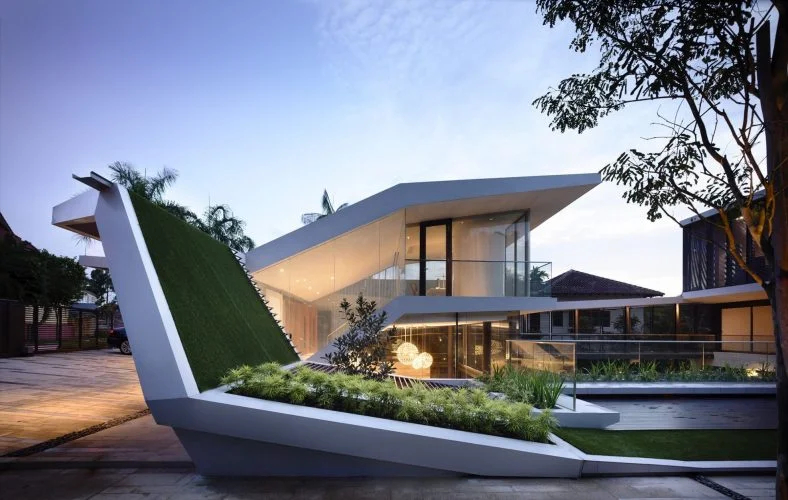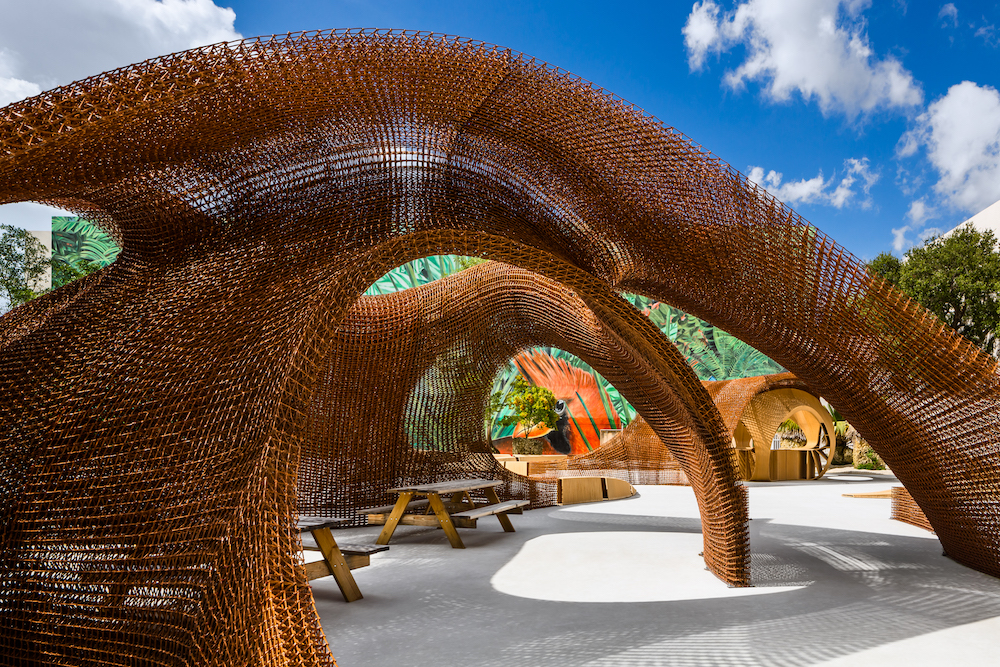Architectural Trends That Will Define The Next Decade
Architectural Trends: whenever you consider the long run, how can you picture the built atmosphere? Based on this short article, initially appearing around the Huffington Post because the Architecture for the future is much more Spectacular than You Can Imagine, the long run is closer than we may think current projects happen to be answering the imagined desires and needs of generation x. From the tower with rotating floors to some park having the ability to cleanse raw sewage, take a look at 14 projects thought to embody the architecture of tomorrow, following the break.
Individuals would be the words of 1 undeniably great architect, Architectural Trends An Artist, whose visions of harmonious design and innovative urban planning amounted to their own make of organic architecture. We’d reason that Wright wasn’t just an interpreter of his time — he could anticipate the desires and needs of ages in front of him. The architect is — always — a visionary able to see to return.
Within the spirit of architecture’s fortune-telling abilities, we have come up with a summary of the most popular contemporary designs that reveal the way forward for our visual world. Behold, 14 designs that demonstrate the architecture of tomorrow.
1. Hypnotic Bridges
Why craft boring suspension bridges or arched overpasses when humanity is capable of doing building massive architectural feats such as this to mix a river The impressive, undulating design, determined to be the pedestrian footbridge within the Dragon King Harbour River in China, maybe the product of NEXT Architectural Trends. The bridge design involves three individual, swirling lanes hovering within the attractive landscape of Changsha.
The rendering won a worldwide competition connected with a brand new public park in the region this past year, and also the project is presently being built. “The construction using the intersecting connections is dependent on the main from the Möbius ring,” states Michel Schreinemachers on the NEXT website. ?On another hand, it describes a Chinese knot that comes from your ancient decorative Chinese folk art,? John van de Water adds.

2. Rotating Skyscrapers
This picture of the 80-story skyscraper, imagined by Dynamic Architecture’s David Fisher in 2008, is really a far-fetched rendering fit for Dubai’s future wealthy and famous. Why? Since it rotates.
The large, towering building might have floors that move very slightly, finishing an all-over rotation every 1 hour 30 minutes. Ignore fighting to have an east-facing apartment, the suites in Dynamic Architecture’s creation might have all cardinal directions covered. Also, it gets better. Architectural Trends Your building could be outfitted with several giant wind generators that generate electricity for tenants, and penthouse residents could park their vehicles in their apartments because of nifty lifts.
While we are unsure this design is ever going to really arrived at fruition (it had been scheduled to be ready to go this year), it really is a visible feast worth ogling.
3. Indoor Parks
In November of 2013, the Strelka Institute announced the champion of the two-stage worldwide competition to create Zaryadye Park, Moscow’s first new public park in 50 plus years. The champion was Diller Scofidio Renfro (together with Hargreaves Associates and Citymakers), who suggested this particularly stunning design with different theories of “Wild Urbanism,” or the idea of a “hybrid landscape in which the natural and also the built cohabit to produce a new public space.”
The park will feature four landscape typologies — tundra, steppe, forest, and wetland, integrating augmented micro-climates that will the park to be a public space throughout Russia’s extreme winters. Basically, the quasi-indoor environments call for controlled temperatures, controlled wind, and simulated daylight that encourage 24/7, year-round park pleasure. As Diller Scofidio Renfro aptly places it, “Zaryadye Park will embody yesteryear and also the future concurrently.”
4. Invisible Architecture
Invisible architecture may be the phone card of sci-fi design, and we are pleased to be convinced that architects nowadays take prescription the situation. Obviously, there’s South Korea’s in-the-works, Brought-clad Infinity Tower. CNN reported in 2013 that “the invisibility illusion is going to be achieved having a high-tech Brought facade system that utilizes a number of cameras which will send real-time images to the building’s reflective surface.”
There is however even the shorter, less flashy structure (pictured above) created by New You are able to-based architecture firm stpmj. The parallelogram-formed barn could be made from wood and sheeted with mirror film, for around $5,000. The concept would be to “blur the perceptual boundary” between object and setting, based on an announcement sent through the Architectural Trends towards the Huffington Post captured. We must say we are impressed with architects’ capability to push the limitations of the items invisible really means.
5. Natural Disaster-Proof Forts
For his series “Dauphin Island,” artist Dionisio Gonzalez designed dreamlike, advanced forts produced from iron and concrete, fusing the function of an artist with this of the architect, engineer, and concrete planner. The peculiar edifices — the hybrid of the beach house, a bunker along with a spaceship — specified for using the residents of Dauphin Island in your mind. Located from the coast of Alabama within the Gulf, the small where you live now is renowned for experiencing perpetual and catastrophic hurricanes. Whenever a storm hits the little island close to 1,200 people, frequently washes away a lot of the shoreline, departing residents to rebuild their houses over and over.
Gonzalez produced hypothetical blueprints for his forts, illustrating how his bulbous, concrete structures would better suit the fraught island’s populous. Discover more concerning slot gacor the project on his website. Bear in mind, these structures aren’t yet slated for reality, however, they certainly paint a fascinating picture of the items advanced island homes could seem like.
6. Sweaters for Skyscrapers
Dubai’s Burj Khalifa is broadly referred to as the world’s tallest building, calculating a whopping 2,716.5 ft and 160 tales. The dwelling is mesmerizing, but what’s much more intriguing is really a think tank’s bizarre proposal to pay for the towering skyscraper inside a giant fabric casing made from reflective material.
We discovered the work, dubbed EXO-BURJ, in 2014. The strange, sock-like covering would cover the whole building, from spire to walk out, inside a “super-lightweight, reflective and semi-transparent fabric material,” based on an account through the Dubai-based think tank, OP-EN. The temporary “sweater” would reflect the expansive urban scenes around it, turning the Burj Khalifa right into a massive mirror within the vein of Christo and Jeanne-Claude.
7. Green Power Plants
What’s there related to an outdated, eyesore of the power plant later on? Why don’t you provide the sprawling facilities an eco-friendly makeover, one which would serve two functions: to enhance the dwelling and supply a different way of coping with CO2 emissions.
Here is how it might work: The architecture firm AZPA (Alejandro Zaera-Polo Arquitectura) intends to turn the present Wedel Vattenfall power plant in Germany right into a new industrial complex, one that might be developed in the previous facilities and wrapped having a corrugated skin of creeper plants. This strategically-placed skin wouldn’t only soften the outside aesthetic of the plant, however, it would produce a sheath of creepers to soak up CO2 emissions. AZPA describes the endeavor, imagined in 2013,
8. 3D-Printed Interiors
Forget interior decorators, the way forward for Architectural Trends is going to be operated by 3D printers. We’ve architects Michael Hansmeyer and Benjamin Dillenburger by way of thanking presenting us for this concept. The 2 performed a 3-dimensional printing task to rival all of them just this past year. Included in the project “Digital Grotesque,” the duo 3D printed a whole room, developing a 16-square-meter cube adorned with unbelievable ornamentation that appears to enjoy it belongs inside an advanced cathedral.
